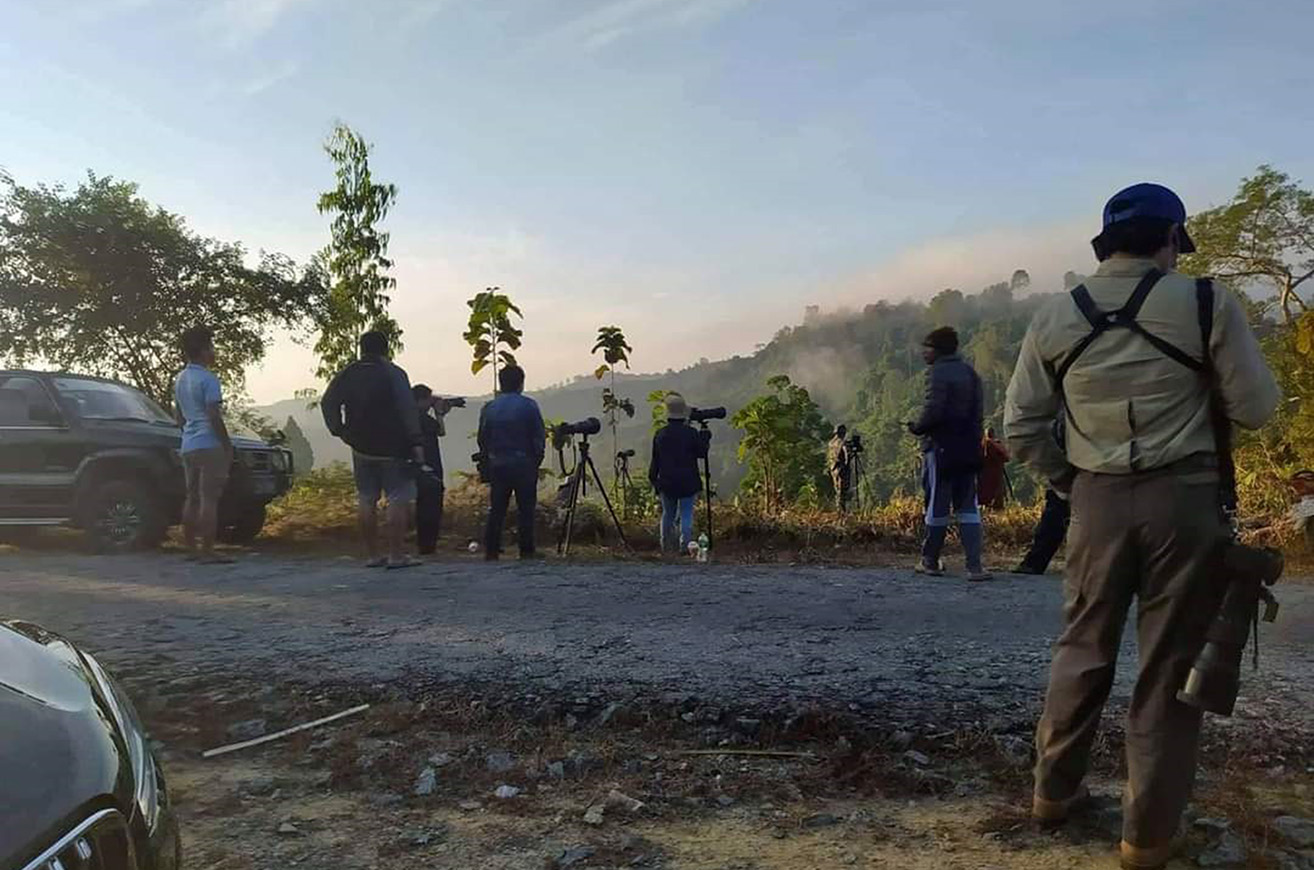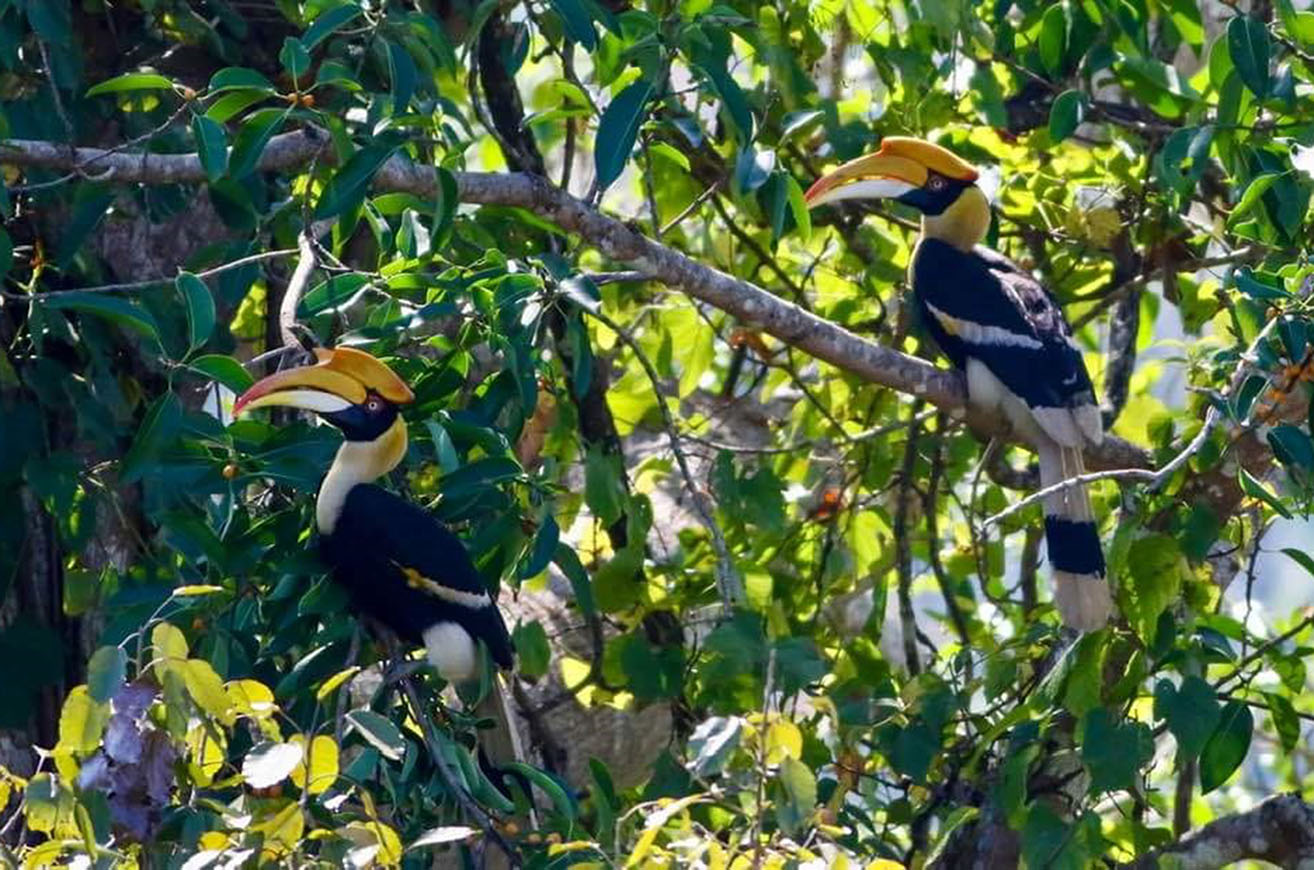18 Dec
A group of more than 40 rare Great Hornbills (Aung Laung birds) used to fly to a giant banyan tree for their favourite food beside the Minhla-Sein Kantlant motorway near Bago Yoma in Kyauktaga Township of Bago Region.
However, due to the killing of some bird hunters in Myo Chaung and residents in Bago Yoma, just around 20 birds of this species are now seen in the bayan tree.
The Great Hornbill, scientifically known as Buceros bicornis, is one of the 10 hornbill species endemic to Myanmar. The Great Hornbills can also be found in India, Myanmar, Thailand, Indochina, Malaysia and the Sumatra Peninsula and they are one of the top endangered species in the world.
In Myanmar, hornbills were commonly found in Rakhine State, Taninthayi Region, Bago Yoma, Shan State, Kayah State and Kachin State, but they are now extremely rare and poaching is also banned by law.
The hornbills are valued by Chin people and regarded as the state bird for Chin State as well as for Kerala and Arunachal states in India. They only live in forests above 4,000 feet and are the long-lived species. They eat various kinds of fruits, mainly fig and banyan fruits as well as insects, snakes and different kinds of lizards.
Before eating, the food is thrown in the air and caught back, and the hornbills make noises during eating. The male and female hornbills live together forever, and the female are bigger than the male. They fly in pairs, in group of more than 40 or 50 birds, in the monsoons and scream loudly when the enemy invades them. During the breeding season, they return to the breeding area where the nest is usually built on the top of the tallest tree. Before mating, the male bird feeds the female and put the food into the nest. The female bird stays in the nest during the hatching period. Around 40 days after that, the newborn birds and the female bird make a hole in the nest and asked for food by making noises. Then the male bird feeds them from the small hole. When the male bird was killed while searching for foods, the female hornbills and her young starve to death together. The hornbills can live around 50 years, even if they are raised at home.
According to Notification No 691/2020 of the Ministry of Natural Resources and Environmental Conservation, the Wreathed Hornbill, Great Hornbill, Northern Brown Hornbill, Southern Brown Hornbill, Bushycrested Hornbill, Oriental Pied Hornbill, Helmeted Hornbill, White-crowned Hornbill and Rufous-necked Hornbill are regarded as endangered species under the Section 22 of Conservation of Biodiversity and Protected Areas Law. Therefore, the educating programmes should be conducted not to hunt these endangered species and every citizen living any parts of Myanmar should participate in the reproduction process of such endangered species and creating of a safe environment for them.
Pyo Ko Lin (Translated by Ei Phyu Phyu Aung)



